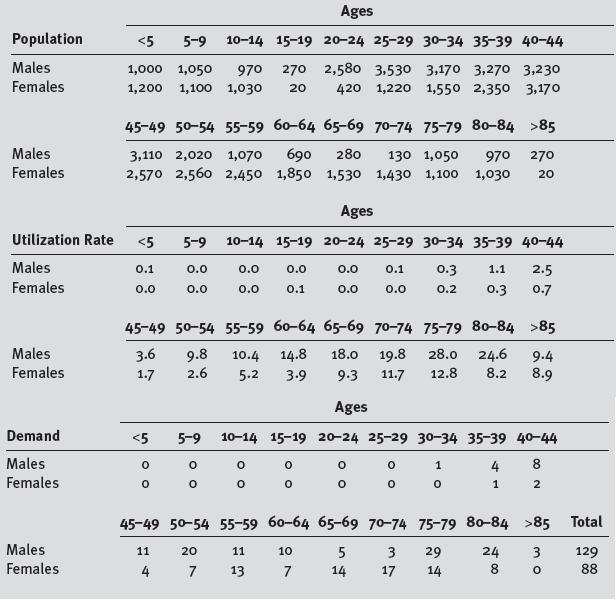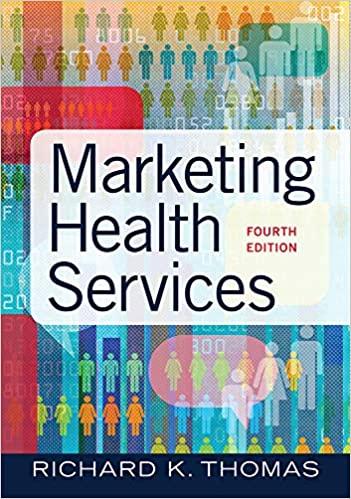For strategic planning purposes, Mountain View Hospital needed to determine the morbidity level of its service area
Question:
For strategic planning purposes, Mountain View Hospital needed to determine the morbidity level of its service area population and estimate the health services demand that these conditions would yield. Unfortunately, these types of data were not readily available, and the market analyst had to develop estimates and projections of demand on the basis of modeled data.
To develop an estimate of the demand from the target population, the analyst needed two types of information: utilization rates that could be applied to the defined population and population estimates and/ or projections. The utilization rates available reflected the population’s age and sex, adjusted for region of the country. The population figures broke down the population into relevant age–sex categories. For each DRG (diagnosis-related group), for example, the utilization rate was calculated for each of 18 age–sex groups. These rates were then applied to the respective age–sex groups in the population in question, and the sum of the estimates or projections was calculated.
Utilization rates based on data collected through nationwide surveys were obtained from the NCHS. When the rates of each age–sex group for each medical diagnosis for hospital patients were applied to the population estimate (broken into age–sex groups), a detailed estimation of health services utilization could be generated. The following table on cardiac catheterization services illustrates this process.
Calculation of Demand for Cardiac Catheterization

Questions
1. Under what circumstances is it necessary to generate synthetic data (estimates and projections) for health services demand?
2. What assumptions were made about the utilization rates and population projections used?
3. How might the figures look different for a similar table for childbirth or breast cancer?
4. What are the dangers involved in making any type of projection with regard to health services utilization?
5. How many years out (e.g., 5, 10, 20) should one feel comfortable making a projection?
Step by Step Answer:






